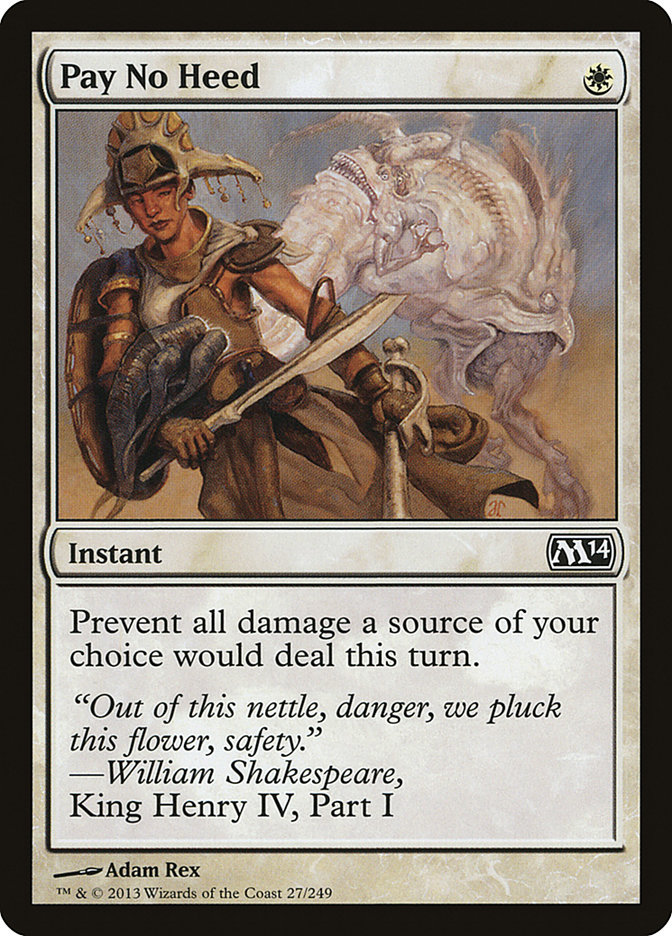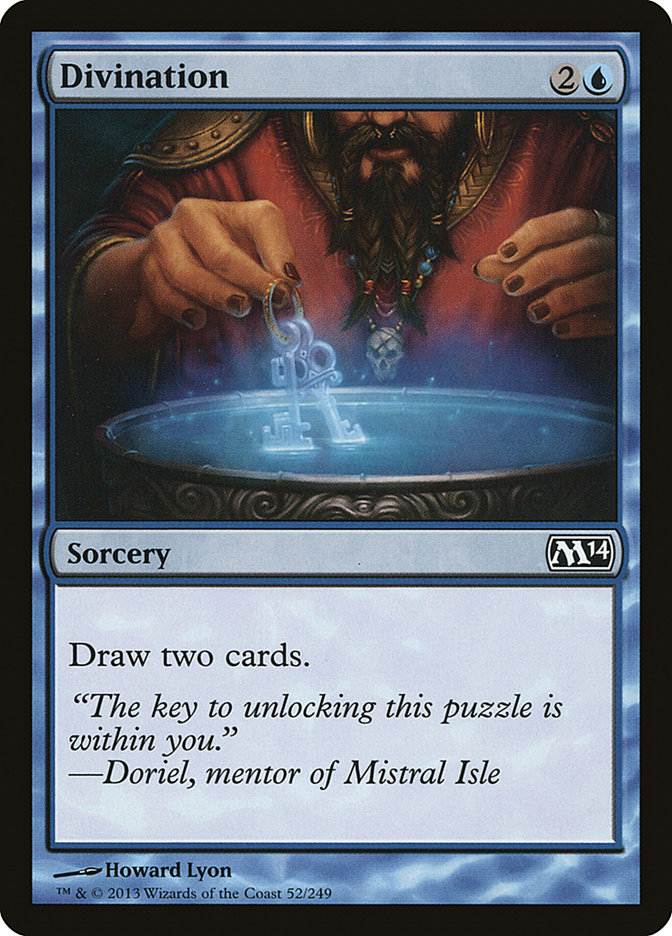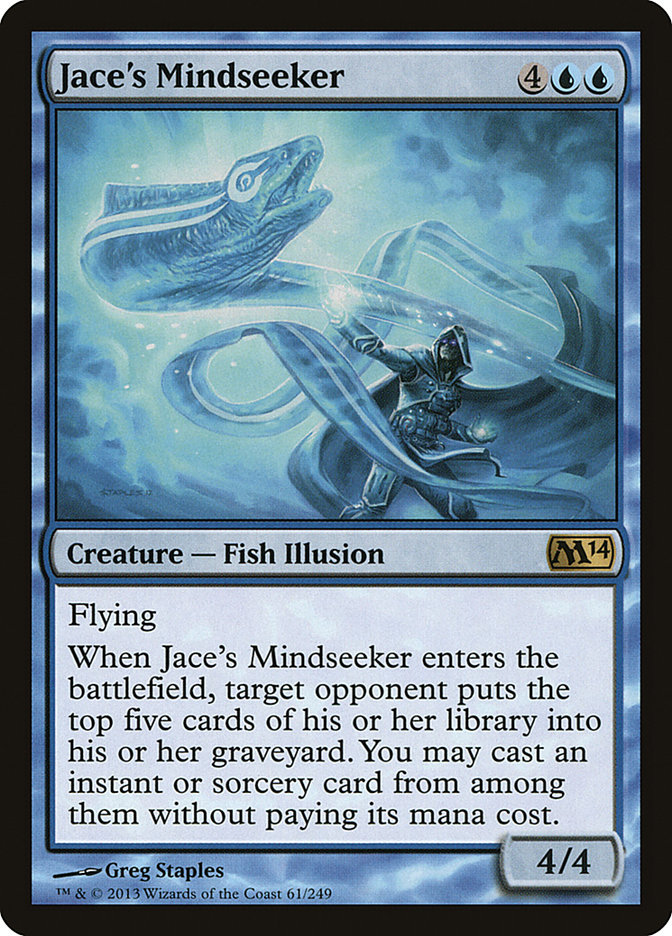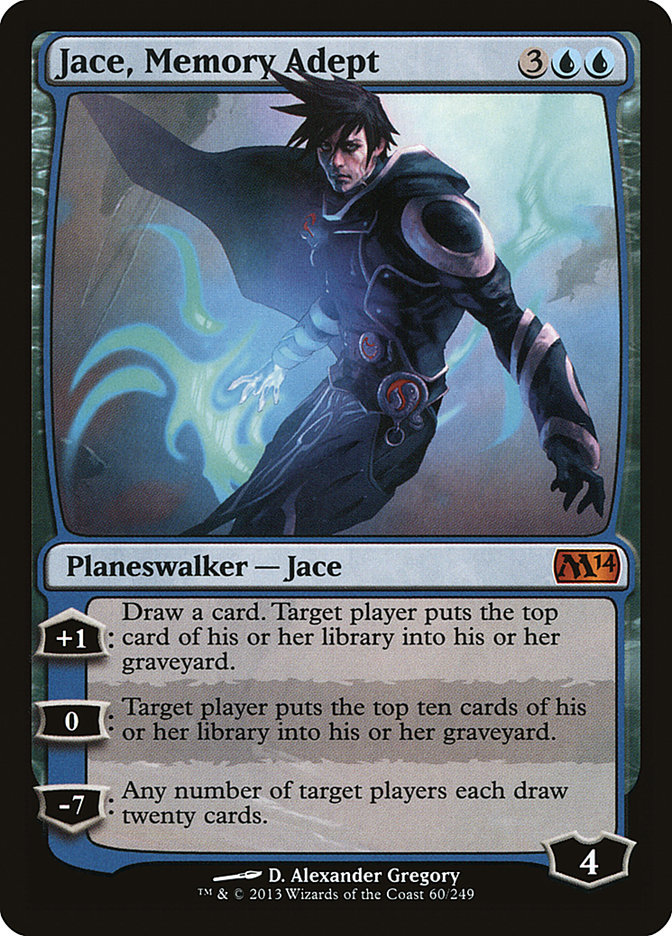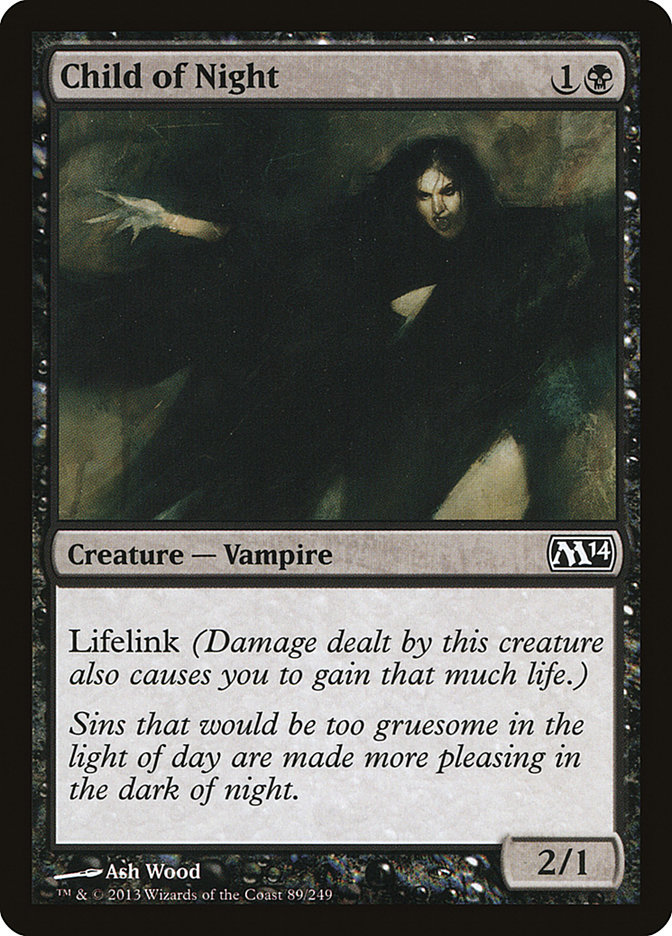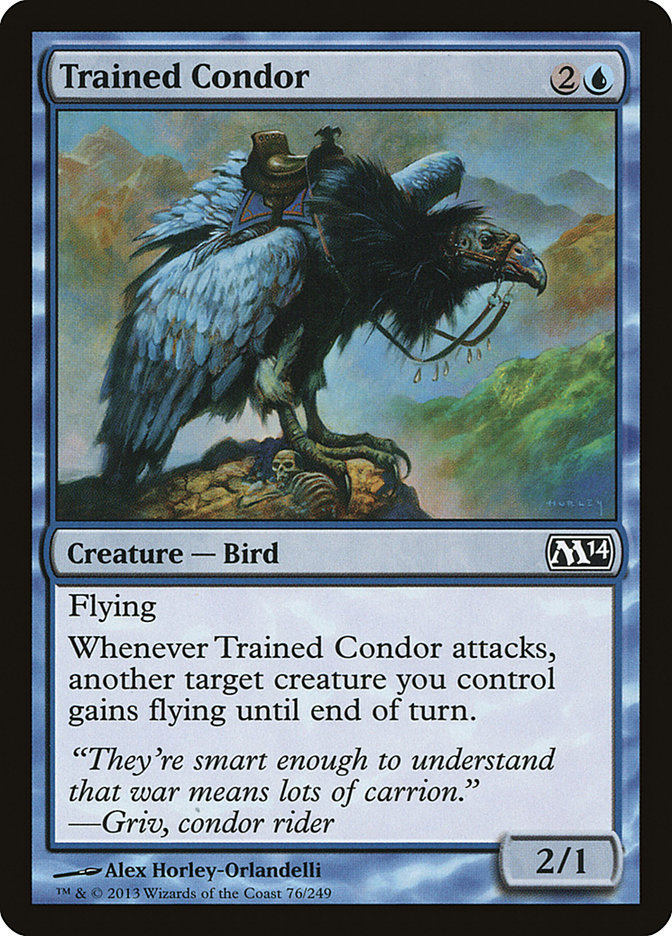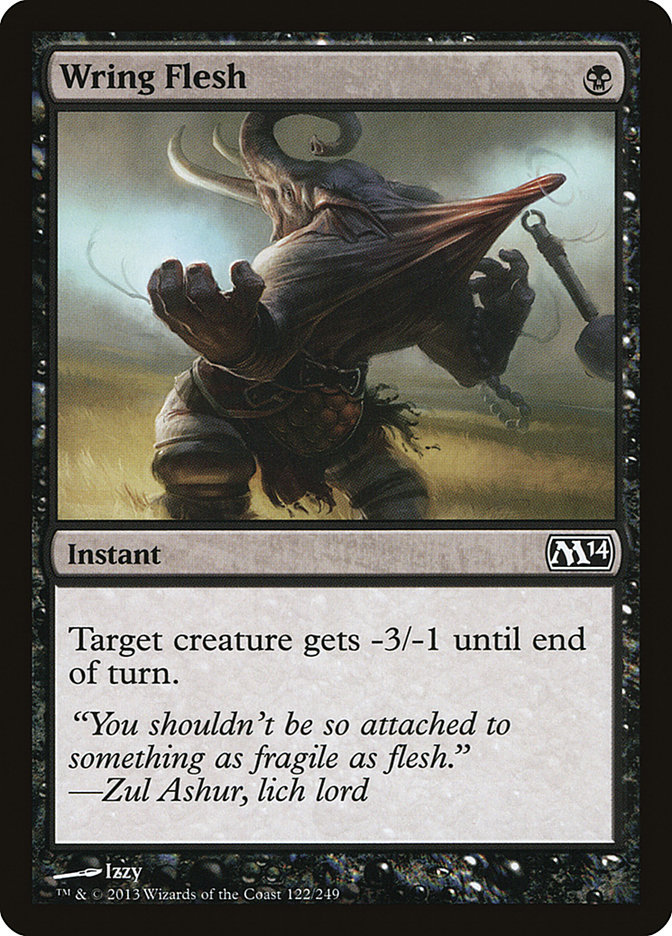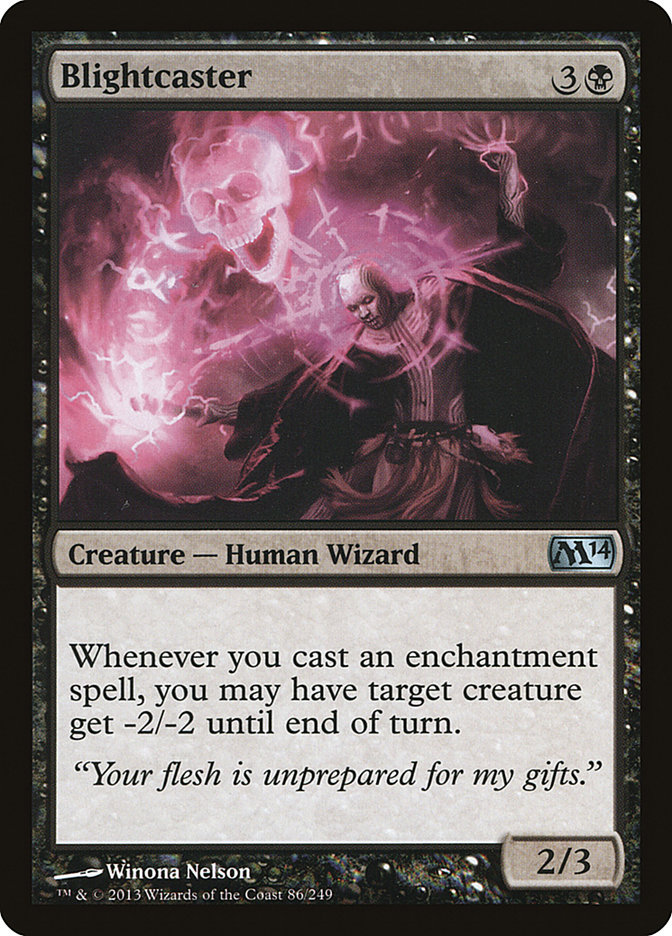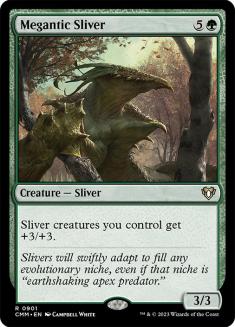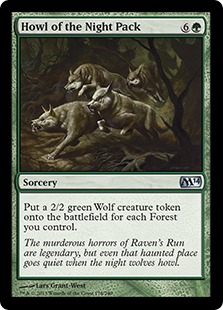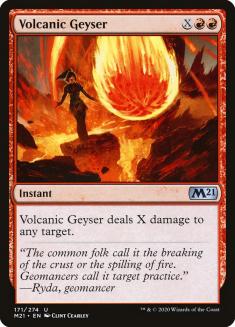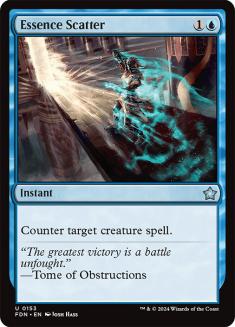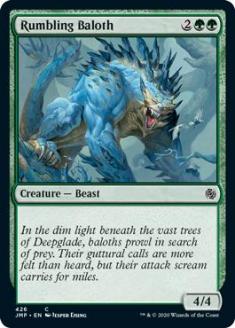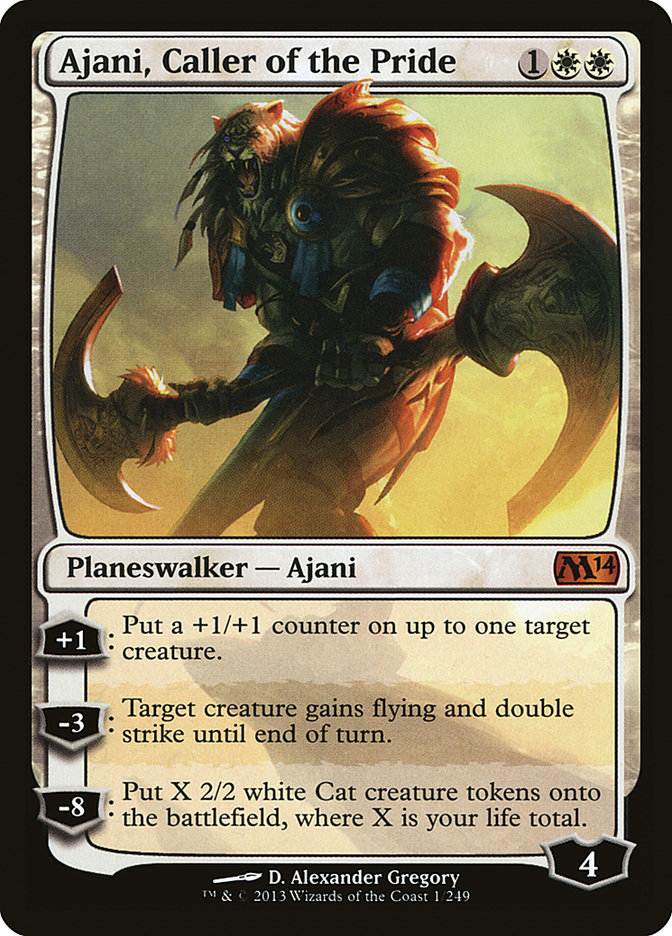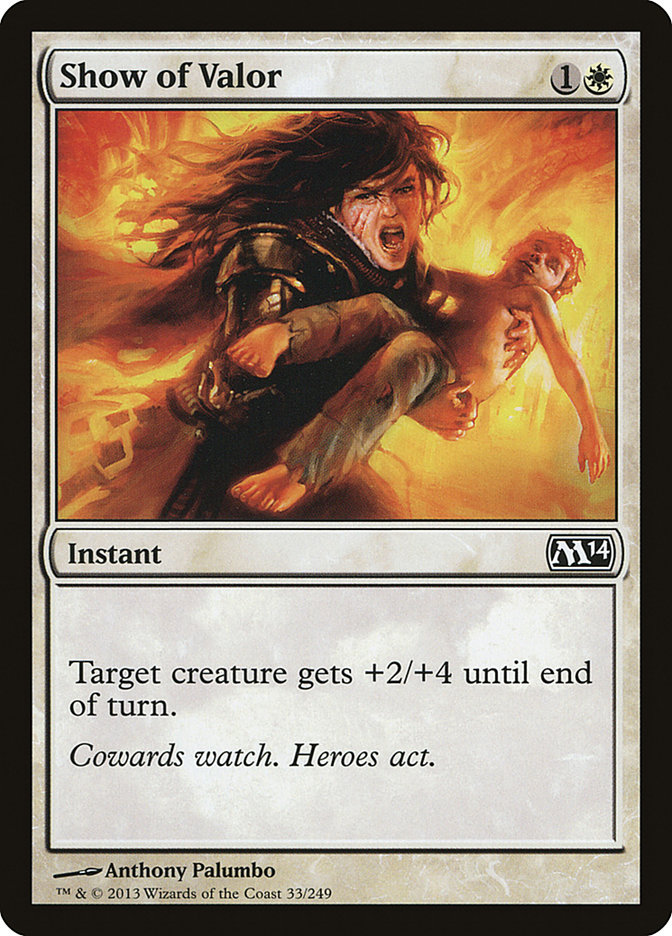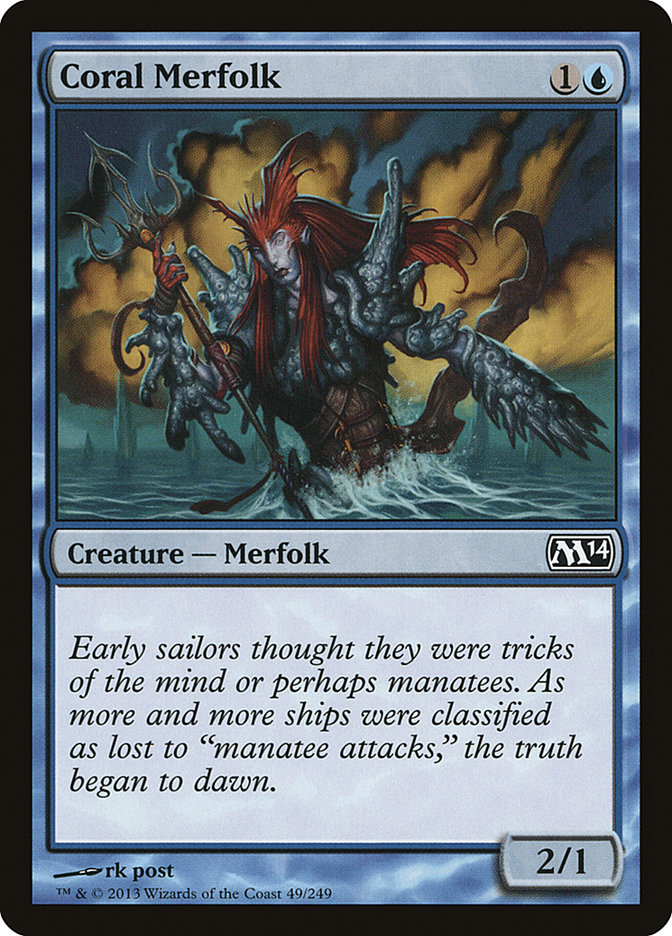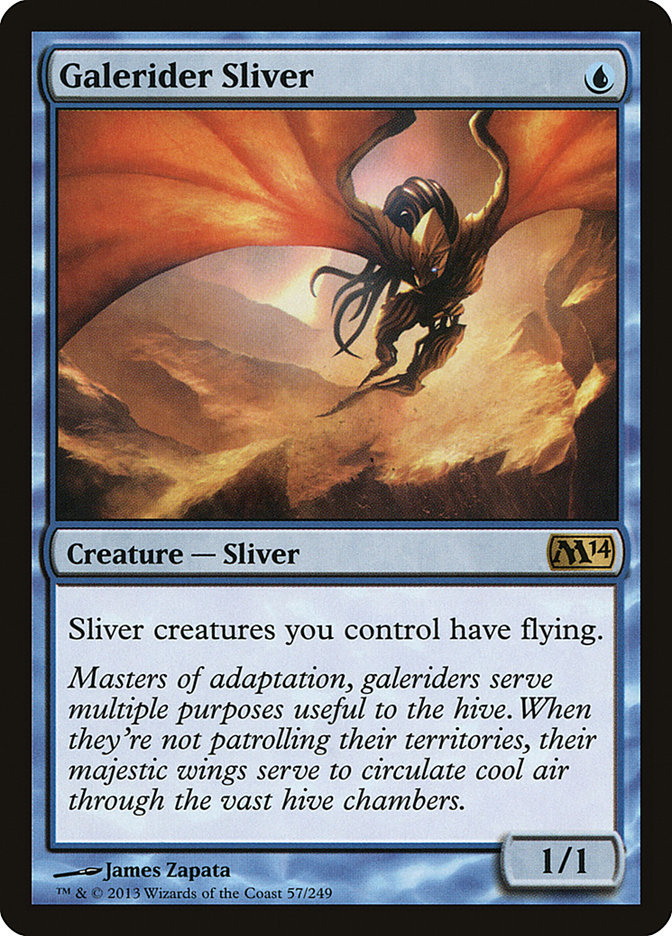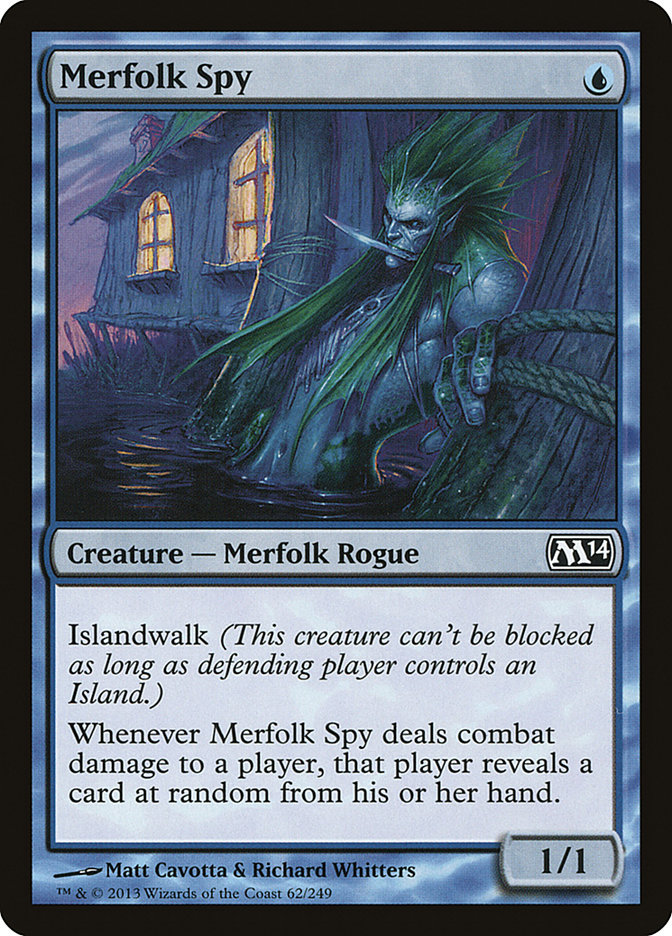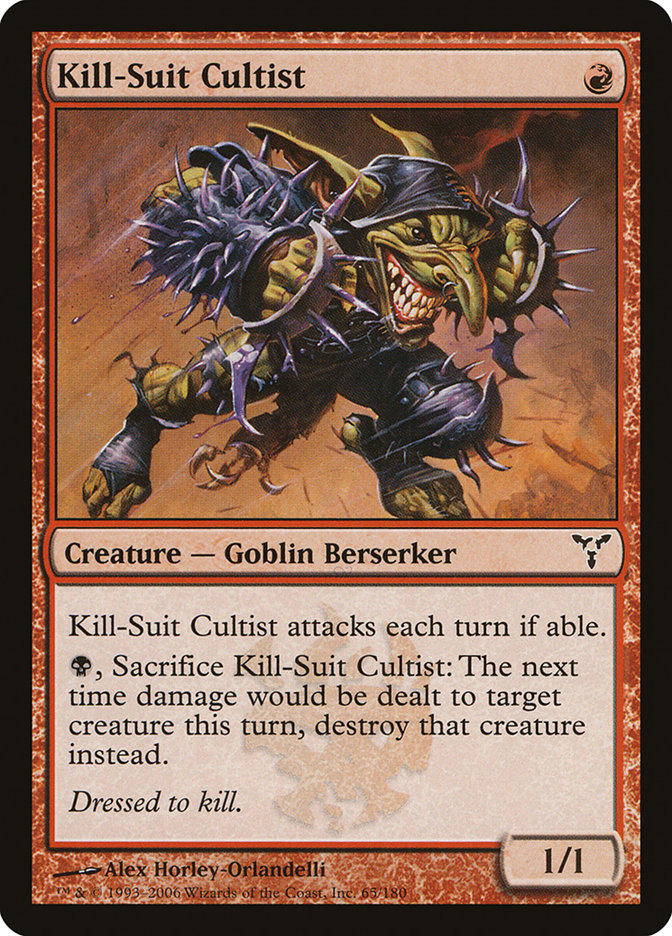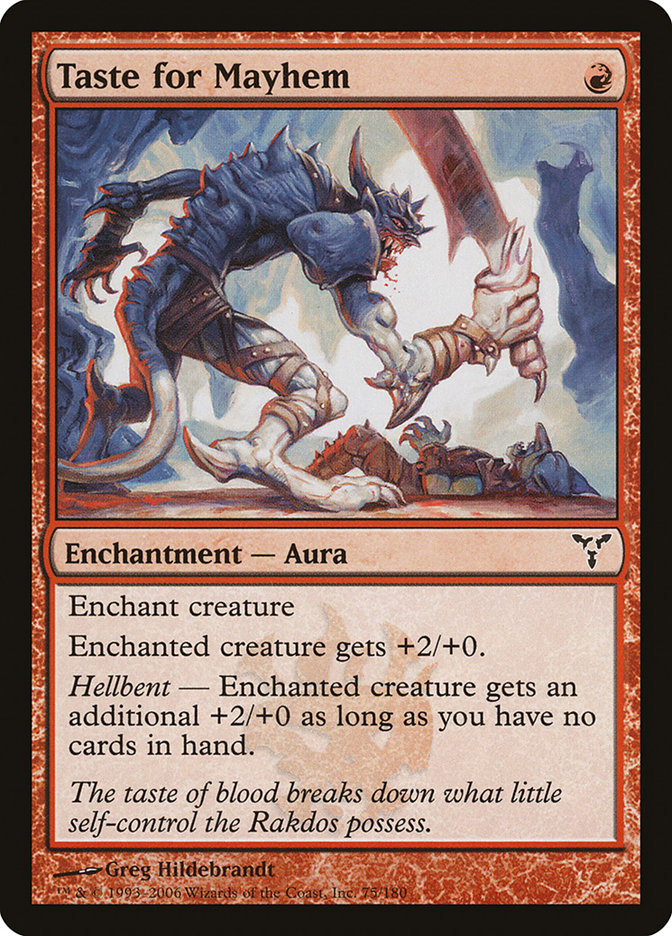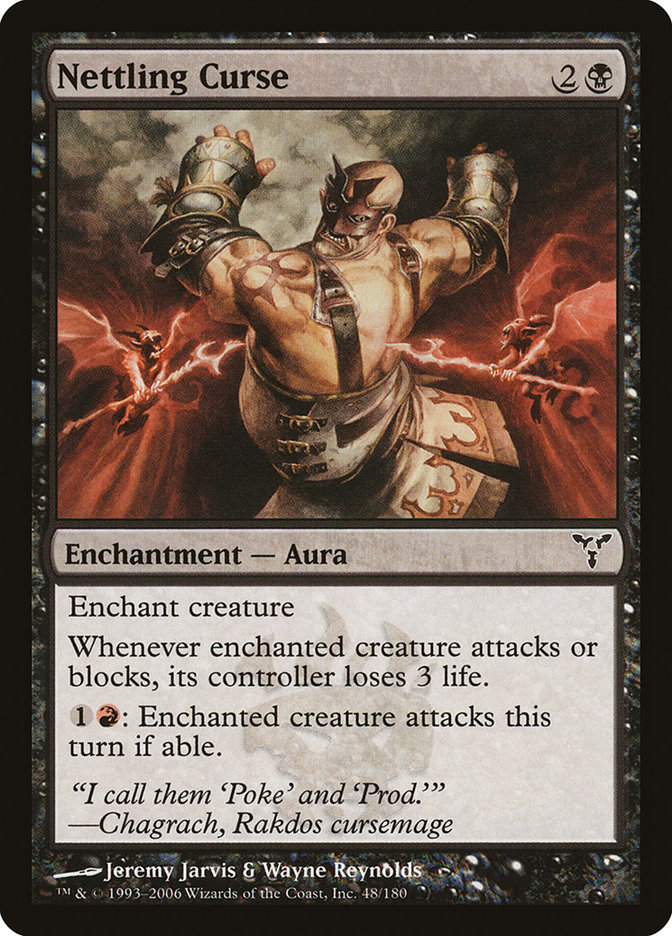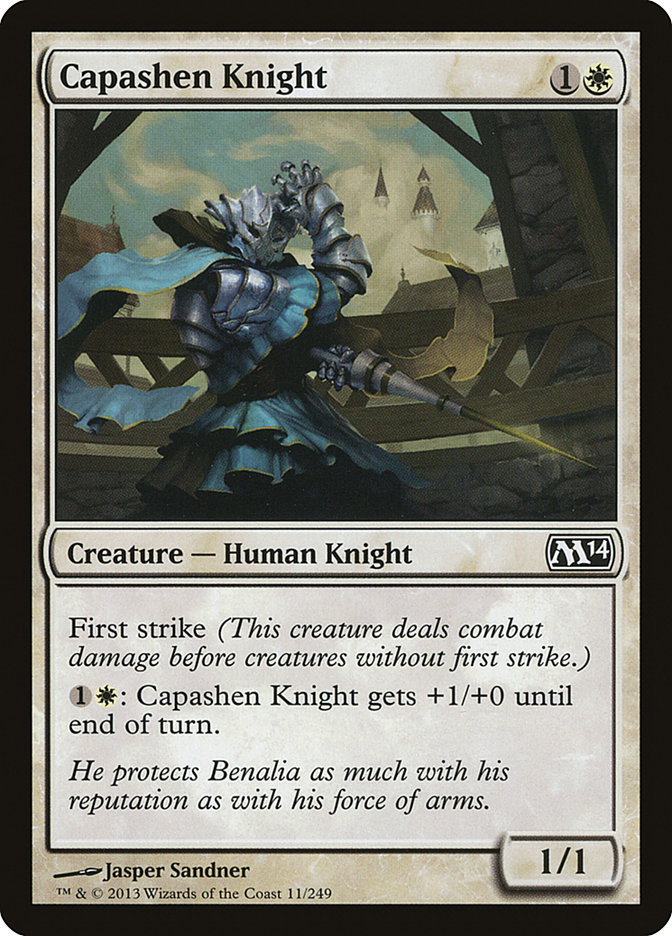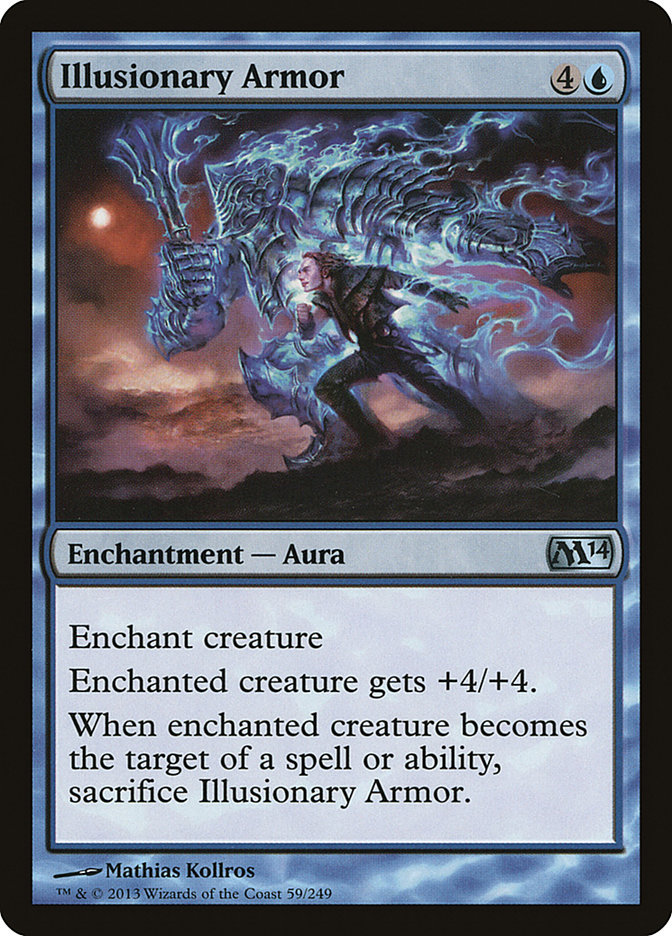Sometimes your friends give you good advice, and sometimes you just do the opposite.
I went to a M14 Sealed PTQ in New Jersey last weekend armed with nothing but some sleeves, a sweet crew (Grand Prix Miami Top 8 competitor Pete Ingram, Grand Prix Pittsburgh finalist Alec Nezin, and owner of the original art for Morphling and all-around good man Nick Detwiler), and a complete lack of knowledge of the format. I had very little chance to play M14 Limited before the event, so on the way there the rest of my car updated me on important factors for M14 Sealed:
- The games will be long and grindy, so card advantage is paramount. Cards like Opportunity are among the best in the format, and grindtastic cards like Archaeomancer are where you want to be.
- As a byproduct of this, there are actually decks where Elixir of Immortality could be a legitimate win condition.
- Blue is the best color by far, with green and black coming up behind. Red is an okay support color, and white is very weak in general.
- Being aggressive is suicide, and pretty much any 2/1 for two mana or even any two-drop in general is mostly unplayable in all but the most aggressive decks.
- Draw first.
I took in all this information and sat down to build my deck.
White
1 Auramancer
1 Hive Stirrings
1 Griffin Sentinel
2 Soulmender
1 Capashen Knight
2 Fortify
1 Indestructibility
1 Path of Bravery
1 Solemn Offering
2 Pay No Heed
2 Blessing
If possible, white was actually worse than expected. Not only was there not even one card that really drew me to the color, but there was hardly a card I would actually even be excited to play in the fifteen cards available. I was definitely not playing white in any way, shape, or form.
Blue
2 Seacoast Drake
2 Coral Merfolk
1 Phantom Warrior
1 Warden of Evos Isle
2 Trained Condor
1 Archaeomancer
1 Nephalia Seakite
1 Water Servant
1 Messenger Drake
2 Sensory Deprivation
2 Essence Scatter
1 Negate
1 Time Ebb
1 Claustrophobia
1 Cancel
1 Opportunity
Now we’re talking! Blue basically offered everything I could want with the exception of a nice, bomby rare: numerous flying creatures, excellent countermagic, some good removal, depth, and the big game of Opportunity. It seemed very clear that blue would likely be my base color, and I was very happy about it.
Black
1 Tenacious Dead
1 Shadowborn Apostle
2 Child of Night
2 Accursed Spirit
1 Blightcaster
1 Minotaur Abomination
1 Wring Flesh
1 Altar’s Reap
1 Doom Blade
3 Shrivel
At only fourteen cards, black looked somewhat shallow. I’ve been a big fan of Child of Night in past formats (despite the warning about 2/1s), and Accursed Spirit looks to be one of the best evasive common attackers in the set. As far as spells go, Doom Blade is about as good as it gets for removal, and Wring Flesh is acceptable. Black was shallow but a possible support color.
Red
2 Striking Sliver
1 Dragon Hatchling
1 Young Pyromancer
1 Dragon Egg
1 Blur Sliver
1 Regathan Firecat
1 Molten Birth
1 Cyclops Tyrant
1 Fleshpulper Giant
1 Barrage of Expendables
1 Seismic Stomp
1 Lightning Talons
1 Lava Axe
Red was also rather shallow and does not offer many saving graces. Young Pyromancer is a very solid two-drop, but for the most part none of these cards drew me to the color at all as cards I’d actually like to play. Add in the fact that there were zero removal spells and it was looking almost as bad as our white.
Green
1 Elvish Mystic
1 Predatory Sliver
1 Voracious Wurm
2 Brindle Boar
1 Advocate of the Beast
1 Briarpack Alpha
1 Sporemound
1 Woodborn Behemoth
1 Garruk’s Horde
1 Vastwood Hydra
1 Giant Growth
3 Lay of the Land
1 Verdant Haven
Green looked to be very difficult. On one hand, it had the only two bomby rares of the pool in Garruk’s Horde and Vastwood Hydra, both very powerful late-game threats. It also had some nice late-game cards in Sporemound and Woodborn Behemoth and a fantastic creature in Briarpack Alpha. The problem was all the stuff in the middle was sorely lacking; Predatory Sliver and Voracious Wurm are nothing more than bears, Brindle Boar is a two-drop masquerading as a three-drop, and Advocate of the Beast has no Beasts to advocate for.
The only cards that cost less than five mana that I would actually want to play were Llanowar Elves and maybe Verdant Haven because there were so many five-drops. This was a huge problem because while the cards are good they were not really coming together into a deck.
Colorless
1 Bubbling Cauldron
1 Guardian of the Ages
1 Encroaching Wastes
1 Mutavault
This pool lacked any real synergy that would make Bubbling Cauldron great, and Encroaching Wastes is unplayable. Mutavault is just a fantastic and underappreciated Limited card; not only did it overperform all day, but it seemed like every deck at the top tables had one. Guardian of the Ages seems like it would be fine in a slower Sealed format, but I didn’t end up playing it and multiple people told me it’s extremely underwhelming.
Putting It All Together
Because white and red were so unplayable, this narrowed down the deckbuilding process significantly. U/B Control was highly touted in our discussions about the format, so I started there. The deck looked very good, but many of the cards were not really control cards; Phantom Warrior, Trained Condor, Child of Night, and Accursed Spirit are all cards that are much more offensive in nature, and some of the spells like Time Ebb and Wring Flesh are also better when you are attacking and trying to control the tempo of the game.
While I had laid it out as a control deck, the deck seemed to lack the power and feel that a long-game control deck usually has; there were no Divinations, no bigger powerful creatures beyond the one Messenger Drake, no bomb rares, and really no major reason to want the game to go super long other than the one Opportunity.
Because of this, I decided that I would much rather play this as an aggressive tempo deck. Aside from the fact that this was the way cards seemed to be falling, this has two major advantages:
1. It goes against the standard convention of the format.
Everyone "knows" you should be drafting a slow, grindy control deck, choosing to draw first, and trying to play an excessively long game. Building our deck in this manner serves to be a foil to that convention. We want to be on the play, and our deck is built very well to deal with these long-game control decks. We have a fast, evasive clock backed up with cheap countermagic to counter our opponents’ powerful long-game spells, and our card quality is high enough that we can also slug it out if we have to. We even have a manland and a very solid backup plan in casting Opportunity.
Yet it is important to note that convention is convention for a reason. When a strategy is tried and tested and the general consensus is that it is in fact the most effective strategy, you better make damn sure you have a very good reason to deviate from it. It is very important not to just go against standard convention in an effort to be "different" or "unique" just for the sake of being "different" or "unique." However, when the opportunity presents itself and you feel you have excellent reasons of why you should do so, deviating can be a powerful strategy.
2. It maximizes the cards that I have.
On its own, Child of Night is not fantastic in this Sealed format. In fact, as I said at the start of this article, many players I respect told me before the tournament that I should not be playing two-mana 2/1s in my deck. However, this is a tempo deck that is sporting not only a lot of removal, but also two copies of Trained Condor to send Child of Night into the skies. Child of Night is okay if it just trades with something with its first attack, but if you can gain six-to-eight life off of it, that’s a huge and game-changing tempo swing. Both Child of Night and Trained Condor are also cards that your opponent really wants to block and trade with, which turns Wring Flesh from a very mediocre removal spell into a fantastic combat trick. Mutavault also expellers in a tempo deck like this.
The Final Deck
Creatures (12)
- 1 Phantom Warrior
- 2 Child of Night
- 1 Water Servant
- 1 Nephalia Seakite
- 2 Trained Condor
- 1 Messenger Drake
- 1 Warden of Evos Isle
- 2 Accursed Spirit
- 1 Blightcaster
Lands (17)
Spells (11)

Overall, I was very happy with my deck.
Who’s Got The Chips?
Despite protests from my friends, I sailed through the Swiss and double drew into Top 8 at 6-0-2. The deck performed very well—I was always on the play, and my evasive threats provided huge amounts of pressure on my opponents while my countermagic allowed me to put the games away.
Mutavault was absolutely fantastic all day. Many times I laid it on turn 4 and cast an Accursed Spirit (also fantastic all day) and then next turn was able to attack with my team and Mutavault and also cast a removal spell. Mutavault is essentially a free 2/2 haste creature that does not take up a spell slot and can be played in almost any deck. Do not underestimate it.
Blightcaster is a strange card. I played it as my 23rd card because I felt the tempo of being able to play a Sensory Deprivation on a guy, kill another guy, cast another creature, and attack for two seemed very appealing. My worry of being able to trigger it was unfounded, as I was able to numerous times over the day. The problem was that sometimes it was just unable to kill anything in play. I wanted it over Archaeomancer because it just seemed like it provided better tempo and because Doom Blade was the only card I really wanted to bring back, but that might have been wrong in retrospect.
The Hero New Jersey Needs Right Now
Now that I had completely mastered the M14 Sealed format on my first try,* it was time for the Top 8 draft. I had been given advice that was similar to the prior advice:
- Again, I was told that blue is the best color, with green and black following it. Due to the self-balancing nature of a draft, however, both red and white are playable
- Regardless, white is still the weakest color, and I should still try to avoid it if possible.
- Drafting an aggressive deck is possible if you do it right but definitely not a favored or desirable strategy.
- While you pretty much want to always play first, you still ideally want to be a control deck that is going to be avoiding playing weak early drops.
So, of course, what did I do?
Now, this was not done on purpose, but the draft started very awkwardly for me. My opening pack contained these relevant cards, with no other blue cards in the pack:
I tanked for a long time. I’m a player who will usually err on the side of taking a powerful open-ended rare early in a draft because I feel like the potential power outweighs the risk involved. However, there were three other good green cards in the pack, and I was not even sure if the Sliver is actually better than Rumbling Baloth to begin with. Volcanic Geyser is great but not fantastic, and red was not really a color I wanted to start in.
So we come to the only blue card in the pack, Essence Scatter. I’d been told to be blue, I wanted to be blue, and it would send a very good signal that would hopefully put the next few players in red and green and open me up for a good pack 2. I was sold.
The next few packs were simply awful. There were literally almost no relevant cards in the second pack besides an Elvish Mystic and a Fireshrieker, and considering I’d just passed the full monty of green cards, taking Mystic seemed like a foolish place to move in. I don’t love Fireshrieker but had been told it’s good, and it’s colorless so it leaves me more options. Pack 3 offered me a Time Ebb and little else, which I gladly took.
The next pack contained Ajani, Caller of the Pride and very little else beyond maybe another average green card. This was probably the most important pick of my draft because Ajani is both a white card and a card that is best in aggressive decks—two things I didn’t really want. However, it was far and away the best card in the pack and a pretty good signal, and I like my early picks to be as powerful as possible. I took it.
The next few packs were again devoid of anything interesting at all, and I picked up some random blue and white cards.
At this point, I was not happy, and visibly so as my friends later told me. I was late in pack 1 of my Top 8 draft with an Ajani, Caller of the Pride and a smattering of aggressive white and blue cards—pretty much exactly what I wasn’t supposed to do—and I was in bad shape.
Yet I also recognized what I had to do—I had to move in. Barring some extremely strong signals, of which I was not getting, I was simply going to have to make the best aggressive U/W deck that I could, leveraging both my Ajani, Caller of the Pride and whatever aggressive white cards I could score that the other drafters at the table would not want. Given my fourth pick Ajani, it seemed pretty clear that I would be getting some good stuff pack 3, and I would have to adjust my picks accordingly.
I ended pack 1 by picking up a late Sentinel Sliver, a Coral Merfolk, a Galerider Sliver, and a Show of Valor. While none of these cards are very good on their own, they were going to form the core of my one-drop -> two-drop -> three-drop -> Ajani/Time Ebb/removal deck. Suntail Hawk was not a card I was upset playing, so the fact that Galerider Sliver would sometimes give my other creatures flying was a great bonus.
Pack 2 was fairly kind to me despite the card quality being much higher than pack 1 overall in all colors. I picked up another Time Ebb, a Banisher Priest, a Fortify, a few more Slivers, and a few other creatures.
Pack 3 things came together about as nicely as they could, as I parleyed a first pick Pacifism into another Banisher Priest and then rounded out with two copies of Illusionary Armor—not a great card to say the least, but one perfectly suited to my ends that would look rather nice on a Suntail Hawk.
When it was all over, this was my deck:
Creatures (14)
- 1 Suntail Hawk
- 3 Coral Merfolk
- 1 Capashen Knight
- 1 Merfolk Spy
- 1 Sentinel Sliver
- 1 Dawnstrike Paladin
- 2 Steelform Sliver
- 2 Banisher Priest
- 1 Galerider Sliver
- 1 Sliver Construct
Planeswalkers (1)
Lands (16)
Spells (9)

Now, I am in no way saying this deck is good—because it’s not. Yes, I am playing Merfolk Spy alongside three Coral Merfolks. Yes, I am playing Divine Favor and Capashen Knight. This is an example of a draft gone wrong, of turning a train wreck into something salvageable. And this deck was perfectly salvageable. It had a plan, and every card in the deck (despite how underpowered they might be) was bent on this plan.
It’s one thing to play bad cards just because you don’t understand why they’re bad. It’s another thing entirely to play bad cards because you know you have to.
Merfolk Spy was not the hero this PTQ deserved but the one it needed right now.
This deck is what I like to call "scrappy." It’s an underpowered racecar; an undersized boxer; a baseball team with a really low payroll; an underdog. Its cards are mostly role players with dirty jobs to do. Yet sometimes the little guy hangs tough and lands that right hook; sometimes the Tampa Bay Rays make it to the World Series; sometimes underdogs with enough heart and enough scrappiness come through. With tight play and a little bit of luck, this is a deck that I am sure had it in it to win the PTQ.
Let me tell you a short story. I used to do team drafts at Neutral Ground back in the day after PTQs, and this was when Steve Sadin was just a PTQ grinder with an outstanding Limited game. I remember doing a draft against him and his team, and he drafted what looked like the worst deck I’d ever seen in Ravnica Block Draft. He was this awful-looking Rakdos deck with so many awful one- and two-mana creatures, multiple Taste for Mayhems, and just a dreadful assortment of cards you would never want to normally play in the very powerful and greedy Ravnica full block Draft format.
He crushed everybody and 3-0ed.
Was his deck ideal? Absolutely not. But Steve was good enough to recognize what he had to do and put it together in the best way possible. Most players would have seen their draft slipping away and resigned themselves to heading back to their teammates and apologizing in advance for the 0-3.
My scrappy deck took me to the semifinals, where I lost to a Chandra’s Outrage off the top on the final turn of a very tight game 3. My friends all told me how bad my deck was, and I agreed with them—my draft was a total disaster that I really wish I could go back and watch to figure out what I did wrong. But I was very happy with what I was able to salvage from it and that I gave myself a good chance to win given the circumstances.
When things go to plan, Magic is pretty easy. You win the die roll and curve out perfectly into turn 2 Farseek, turn 3 Huntmaster of the Fells, turn 4 Thragtusk, turn 5 miracle Bonfire of the Damned, turn 6 miracle Bonfire of the Damned.** You go turn 1 Thoughtseize your opponent, Lotus Petal into Entomb for Griselbrand, Lotus Petal into Reanimate. You get the idea.
But I think what defines us most as Magic players is what we do when things don’t go to plan.
Oh, and amusingly enough, an aggressive mono-white deck took it down in the finals. I guess he didn’t get the memo either.
Thanks for reading,
https://www.facebook.com/jimdownsidehttp://www.facebook.com/jimdownside
(I highly encourage all comments and feedback. Feel free to either post in the comments of the article or message me directly on Facebook. Please also feel free to follow me on Facebook, but don’t be offended if I don’t accept your friend request; I only add people I’m acquainted with in person.)
*I’m kidding, relax.
**Thank god for rotation.

